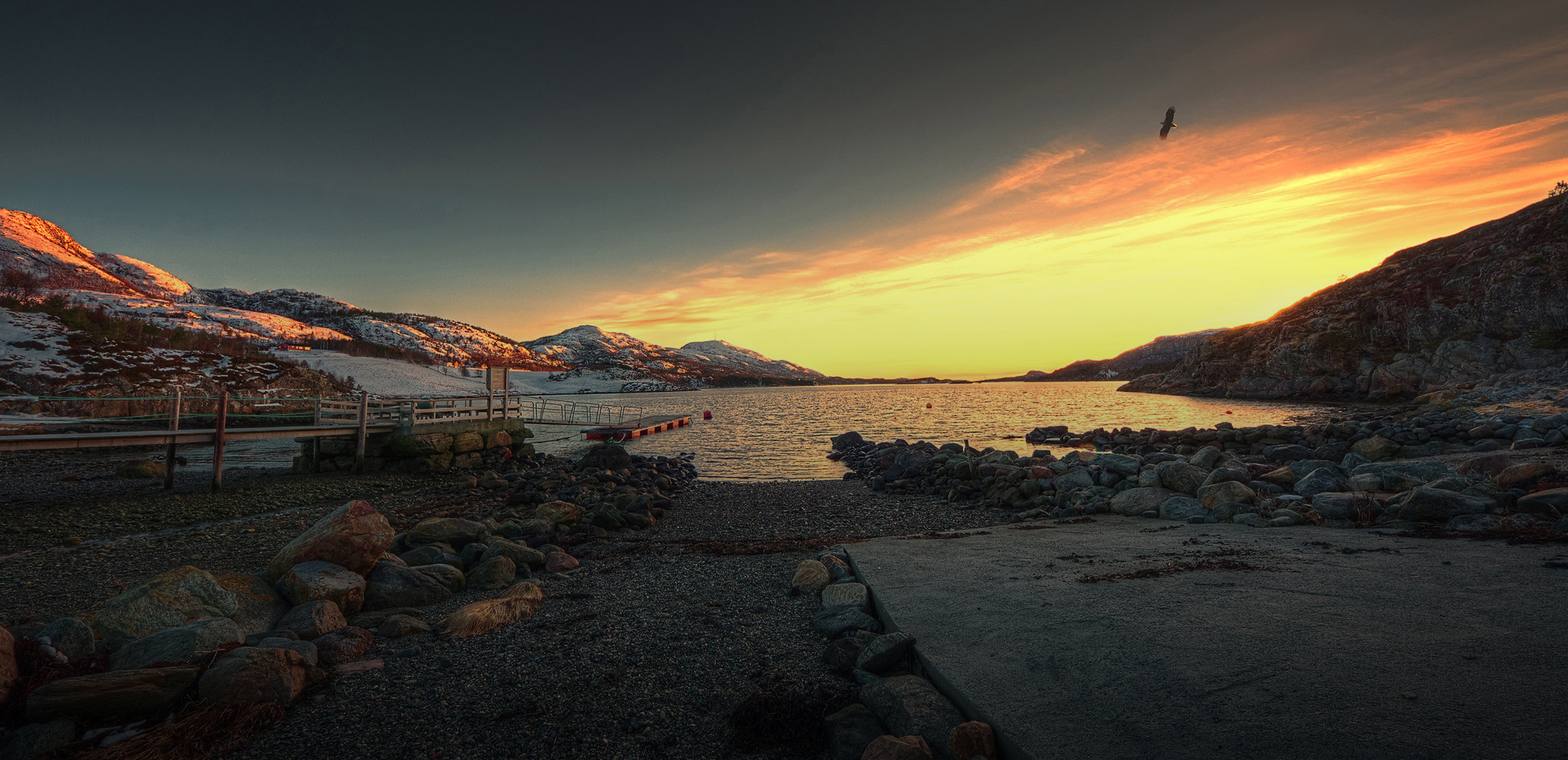

Trøndelag county
Population
Area
On this page we have collected data and information that is intended as a starting point for assessing how the county is affected by climate risk. Scroll down to see how greenhouse gas emissions, climate change, investments and business structure may affect the climate risk Trøndelag is exposed to.
Climate risk in Trøndelag
Tap a category to display graphs for that category
Emissions within the county
Change in the previous year
Emissions per citizen
Emission of greenhouse gases drives climate change. Without reducing emissions, we will not be able to slow down climate change and thus minimize the physical climate risk that results from climate change.
The transition to a low-emission society requires a sharp reduction in greenhouse gas emissions, also in Norway. We will likely experience more taxes, carbon pricing and bans on high-emitting technologies. This represent transitional risk for municipalities and counties. The local authority's own emissions may fall under the scope of new regulation and thus impose costs on the municipality or county. Carbon-intensive businesses that are important to the local community may experience that demand, revenues and company value are affected, which again may affect tax revenues. You can read more about how the local business community can be exposed to climate risk under the tab «business».
The extent to which a municipality or county controls the emissions in its area varies. For example, it will be easier to influence emissions from industry and own activities (through instruments such as permits and tenders) than emissions from large thoroughfares such as the E6. This is also reflected in the risk: Large emission sources over which the municipality has little influence usually do not represent great climate risk for the municipality.
Industrial emissions in Trøndelag
Some firms are required to report indicators to the Norwegian Environment Agency, because the firm is associated with large emissions and/or a large environmental risk. Reported indicators include annual emissions, production volume, consumption of energy, and amounts of waste and hazardous waste produced. The table shows emissions from businesses obliged to report in Trøndelag for the year of 2022.
The emissions are included in the county's overall emission accounts.
Note that only emissions from activities defined as industry are shown in the table. Emissions from offshore operations, sewage treatment plants and landfills are therefore not shown here.
Data retrievedLarge emissions from land-based industry are considered to be a relevant proxy for transition risk. This is because it's likely that high-emitting businesses will be required to reduce their emissions in the future, and that some will face a decrease in demand for their products.
If these businesses also employ a large proportion of the local workforce, the risk is amplified as the local community may experience the loss of many jobs at the same time (a "cornerstone effect"). This can have dramatic effects on budgets as tax revenue is reduced.
The greenhouse gas accounts include emissions from three different greenhouse gases. To compare the global warming potential (GWP) of these, tonnes of CO2 equivalents is used as the common unit of measurement. Carbon dioxide (CO2) has GWP = 1, nitrous oxide (N2O) has GWP = 298 and methane (CH4) has GWP = 25. The factors are taken from the IPCC's fourth main report, and are the same as used in the national emission accounts and in international reporting. Source: the methodology note accompying the Norwegian Environment Agency's municipality distributed emission statistics (in Norwegian).
Sea level rise and storm surge in Trøndelag
For coastal communities, sea level rise can be a source of climate risk. This section shows the extent of buildings, roads and areas in the county that may be flooded in 2090, and which are vulnerable to storm surges today and in 2090, respectively. For future sea level rise, the upper bounds of scenario RCP 8.5 is applied. This is a scenario developed in the context of the IPCCs fifth assessment report, and represents a scenario with high emissions, without effective policies to reduce emissions. This is the scenario used by the Norwegian Mapping Authority and recommended for planning by the Norwegian Directorate for Civil Protection (DSB).
Estimated sea level rise per 2090
Sea level rise: Least in county
Sea level rise: Largest in county
Flooded areas at medium tides in 2090
Buildings
Roads
Area
Storm surge today and in 2090
Flooded areas at 200-year storm surge now
Buildings
Roads
Area
Flooded areas at 200-year storm surge in 2090
Buildings
Roads
Area
The figures are aggregated numbers for coastal municipalities in Trøndelag.
Green projects in municipalities in Trøndelag
The list shows projects financed with KBNs green loans. From the drop-down menu you can toggle between the county's own projects and projects initiated by municipalities within Trøndelag.
KBN offers green loans with reduced interest rates to projects with clear climate- and environmental ambitions. These loans are financed with green bonds.
Contact us
Climate risk for industries essential to Trøndelag
We have listed the industries that employ the most people in the municipality and that we believe may be affected by climate risk. The questions in the table are intended as a starting point for dialogue with the local business community. We have tried to indicate the degree of severity at an overall level but recommend that you make a separate assessment based on the local context.
| Risk | Consequences |
|---|---|
| None Apart from those resulting from the location of production facilities, there are no obvious physical risk factors for this industry. |
| Risk | Consequences |
|---|---|
| High severity Measures to reduce car traffic | What do measures to reduce car traffic, e.g. relocating junctions or toll booths, mean for the location of shopping centres? |
| High severity The transition to the circular economy | What does the transition to the circular economy and the increase in recycling mean for the retail sector? |
| Risk | Consequences |
|---|---|
| High severity Extreme weather (damage and adaptation) /changes to weather patterns | What will an increase in extreme weather, such as droughts or extreme precipitation, and changes to weather patterns mean in terms of access to raw materials and the manufacturing of food products? |
| High severity Climate risk in other countries | What would climate risk in other countries mean in terms of access to imported raw materials? |
| Risk | Consequences |
|---|---|
| High severity Changes to consumer behaviour | What would be the impact of consumers increasingly demanding information on the carbon footprint of food products? What would be the impact of consumer behaviour changing in favour of food products with a smaller carbon footprint? |
| Risk | Consequences |
|---|---|
| Medium severity Extreme weather (damage and adaptation) | What does an increase in extreme weather, particularly more precipitation, more intense precipitation, more floods and more surface runoff, changes to freeze-thaw cycles or more landslides, mean in terms of the wear and tear and scope of the damage sustained by transport infrastructure, and in terms of disruption to traffic? |
| Risk | Consequences |
|---|---|
| Very high severity Transition to zero-emissions in the transport sector | What do toll stations, zero-emission zones and road user charges mean for the transportation of goods and persons using fossil-fuel-powered motor vehicles? What would be the impact of customers of transport services, e.g. road-based goods transportation, increasingly demanding solutions that generate lower emissions? |
| Risk | Consequences |
|---|---|
| Very high severity Extreme weather (damage and adaptation) | What does an increase in extreme weather, e.g. droughts, extreme precipitation, floods, storms or higher sea levels, mean in terms of the risk of erosion, the quantity and quality of crops, and the spread of (new) plant and animal diseases? |
| Very high severity Changes to weather patterns | What do changes to weather patterns mean for the growing season and overwintering conditions for plants? |
| Very high severity Climate change in other countries | What does the climate risk in other countries mean in terms of access to important commodities, e.g. soy? |
| Risk | Consequences |
|---|---|
| High severity Stricter regulations / increase in the cost of emitting greenhouse gases | What will future regulations intended to reduce greenhouse gas emissions or an increase in the cost of emissions mean for machinery fleets? |
| High severity Changes to consumer preferences | How might a decrease in demand for animal products (meat, dairy products) impact agriculture in the municipality? |
| Risk | Consequences |
|---|---|
| High severity Sea temperatures | What does an increase in sea temperatures mean for the aquaculture industry, e.g. with regards to foodstuff consumption by salmon? What does an increase in sea temperatures mean for fishing, e.g. changes to keystone species, species combinations and food chains, and fluctuations in fish stocks? |
| High severity Climate risk in soy-producing countries | What does climate change in other countries mean in terms of access to certified soy for fish feed? |
| Risk | Consequences |
|---|---|
| High severity Stricter regulations / increase in the cost of emitting greenhouse gases | What will future regulations intended to reduce greenhouse gas emissions or an increase in the cost of emissions mean in terms of the ability to use diesel generators and vessels that only have internal combustion engines, or in terms of the cost of transporting products to customers, particularly by air freight? |
The sample is based on Statistics Norway's statistics on employment by place of residence (table 08536). You can learn more about how we have selected the industries in the methodology note.
At this time, we do not have any data for [blockname]
At this time, we have some problem viewing data

